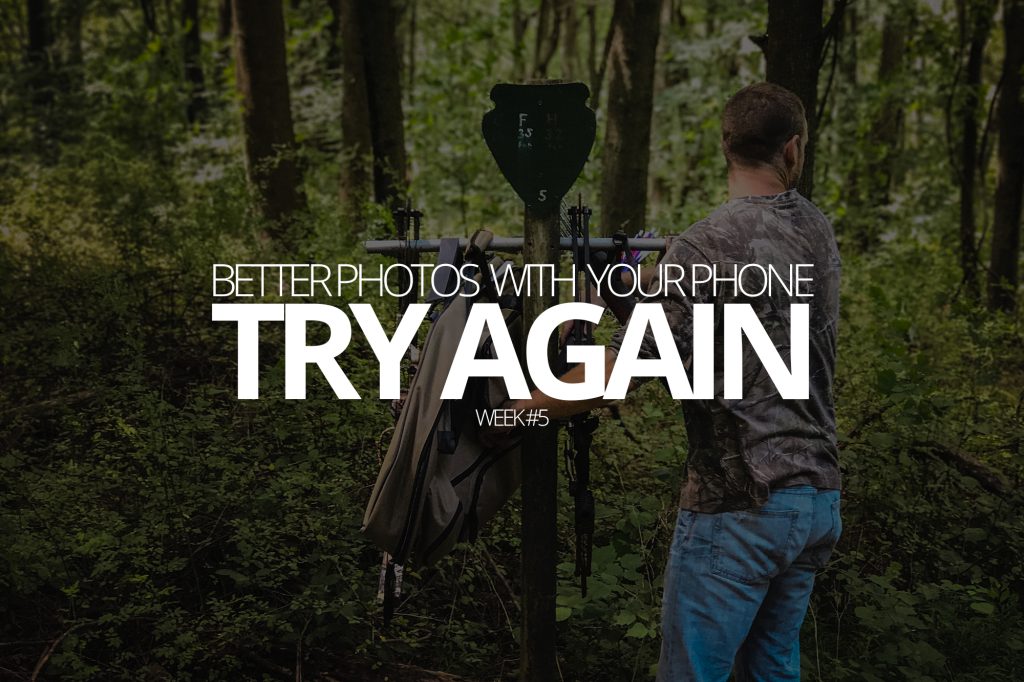Last time in our series about getting better photos with your phone, we talked about how important it is to know who or what your subject is, and what it is you want to say about that subject. It’s not as complicated as it sounds. If you missed that installment, go back and check it out!
This time, we’re going to get into the learning process itself a little bit. Getting good at your everyday photography doesn’t necessarily require a huge investment of time or money, or even energy. It’s not like learning to play the guitar where skills, to some degree, come from just logging a lot of hours, and developing the muscle memory with time and repetition. The photography you encounter every day with friends and family is much more improvisational, and reactive to a particular moment in time. You can’t exactly “practice” in the sense of simple repetition; lighting changes, backgrounds change, people’s moods change, camera equipment changes.
So, what it means to ‘practice’ photography is a lot more about the repetitious things you do with your mind, than anything specific you do with your hands or feet. So, lets look at what it means to ‘practice’ photography, and some of the techniques you can squeeze into your lifestyle—without having to invest all your energy, time or money to do it.
First, Don’t Get Discouraged
The goal in this whole series is to help you enjoy the images you take throughout your day-to-day life more, and to get more enjoyment out of sharing them. Many people rarely pull out their phones to take a picture because they know they aren’t going to like it. Some people who diligently do pull out their phones to take a picture rarely look at them or share them with loved ones because they don’t like the photos, or because they assume someone else took a better photo.
Look, you can get pretty good at this and you don’t have to devote more than a few minutes a day to do it. It’s not going to happen overnight, but don’t get discouraged. Try to use these practice techniques whenever you would naturally take a photo, and you will get better at it (and your friends will say so too).
Notice, Then Try Again
The key to improving anything is to notice what’s wrong with it. Or, in this case, what you don’t like about it. The natural impulse for most people when they see a photo they don’t like is to simply say, “I don’t like it”, and to move on. You need to get more specific than that.
Lets think about that first day of school photo from Take The Breath (week #3).
You took the photo of the kids on the front porch before they have to get on the bus for their first day of school. Before they run off, you quickly look at the photo you just took, and you don’t like it. Now is not the time to say “oh well” and put the phone back in your pocket. If you want to get better at this, you have to try again right now in order to begin cementing the lesson. But, before you do, figure out what you don’t like about the photo you just took.
Did you cut off their feet in a weird place? Is one of them bent over in a weird way? Did you want them to have their backpacks on? Was it too bright? Did you take the photo from too far away? The key difference between a ‘photographer’ and everyone else, is what they notice and with how much effort. A skilled, experienced photographer notices without consciously thinking about it, and often before the photo is taken. You, probably don’t. So, for you to practice photography, you need to practice noticing.
Give yourself 10 seconds to look at the photo and decide what isn’t working. Once you’ve identified what you don’t like, try again right away, correcting that thing. Having gone through this small amount of effort, the next time this sort of thing comes up, you’re much more likely to notice immediately. As your ability to notice improves, so will your photography.
How to Try Again
To be quite honest, deciding what it is you don’t like about a photo you took, and trying to correct that thing is often easier said than done. Sometimes it’s obvious—“It’s just much brighter than I wanted it to be”, or “I should have gotten closer”. But sometimes, maybe the shadows look weird, or there’s some strange color tint, or maybe it’s too windy, or the clothing looks strange with the background.
The thing is when you go back to try again, you don’t want to blow up your whole picture right away. Ideally, you want to find the smallest thing you could change that would make you like the picture more, and change that thing. Blowing up the whole picture might not even be an option. If the bus is going to arrive for the kids any second now, you can’t go hunting for a better background or have them change their clothes. It needs to happen here and now, and making something you like out of what’s right here right now is almost always possible.
So, first, look for the smallest changes you can make, and make those changes when you try again. Rearrange people, take a few steps to the left or right, crouch, change the brightness by tapping a different part of the picture. The sum of these kinds of changes often make a much bigger difference than you might think, and this process of noticing and then immediately trying again really helps these skills take hold. If there are bigger issues, and time/energy allows for it, make some bigger changes. If the impromptu family photo at Christmas dinner doesn’t look good in the front yard, go ahead and walk to the back yard and try again. If the kids aren’t smiling, feed them and then try again. If the landscape would look better from the other side of the river, go ahead and hike over there.
If you follow this advice, the photography you create with your phone will get better.
Next Time
Get out there and take some photos! The next installment will piggyback on this one as we talk about patience, both in regards to photography in your life, and the practice you put into it day to day. In the mean time, tweet us your best stuff! We’d love to see how you’re doing!

